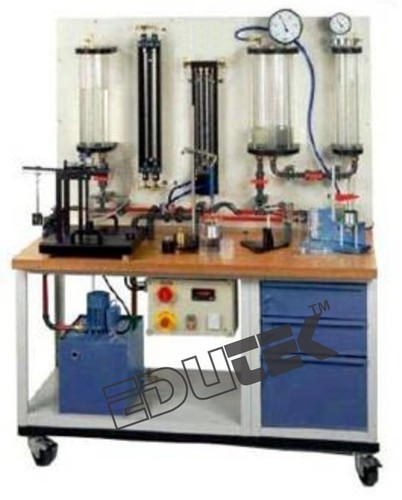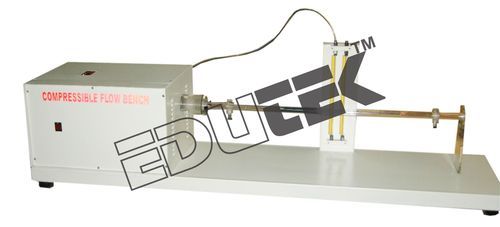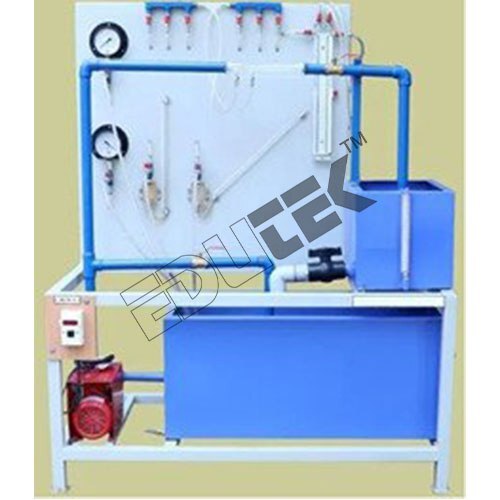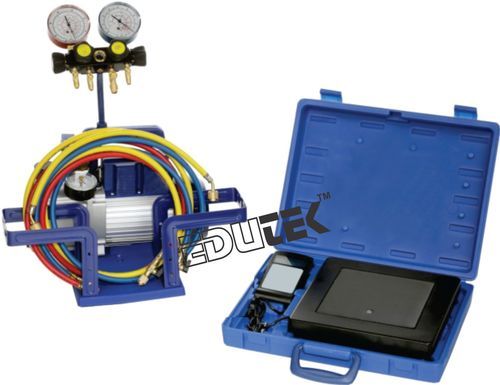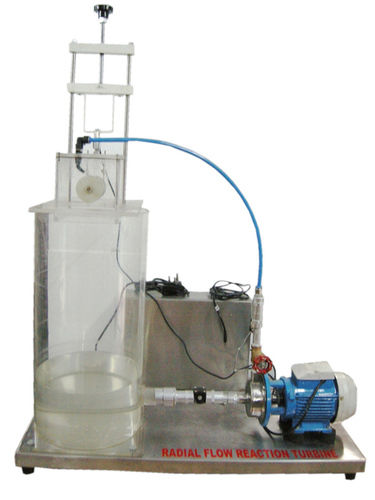Hydrostatics Trainer
Product Details:
X
Product Description
HYDROSTATICS TRAINER
Hydrostatics is the study of fluids at rest. Phenomena occurring as a result of hydrostatic pressure are analysed and the force effect determined. Hydrostatic aspects play a crucial role in various areas of engineering, such as in plumbing and domestic engineering, in pump manufacturing, in aerospace and in shipping (buoyancy, load on the sides of a ship).
The trainer can be used to conduct experiments in the field of hydrostatics, such as ground pressure measurement or demonstrating Boyles law. Determining the centre of pressure completes the range of experiments. Furthermore, experimental units for studying capillarity and buoyancy are included. The hydrostatic pressure and surface tension are measured. Additionally, one experiment uses a Pitot tube and a tube for static pressure to study the pressure components in a flowing fluid.
To make the functions and processes visible, the tanks and the experimental units use a transparent design. Tanks and pipes are made entirely of plastic.
Various pressure gauges are available for measuring pressure and differential pressure of the liquid fluid, such as a Pitot tube, tube for static pressure a pressure sensor with digital display, twin tube manometers or a differential pressure manometer. A diaphragm manometer and a Bourdon tube manometer indicate the pressure of the gaseous fluid.
The trainer has its own air and water supply. The closed water circuit includes a supply tank with submersible pump. A compressor is included to generate positive and negative pressures for the experiments with air.
The well-structured instructional material sets out the fundamentals and provides a step-by-step guide through the experiments.
Learning Objectives / Experiments
- Study of buoyancy on a variety of bodies
- Study of the density of liquids
- Hydrostatic pressure, Pascal's law
- Communicating vessels
- Determination of the centre of pressure
- Study of surface tensions
- Demonstration of capillarity
- Boyle's law
- Study of static and dynamic pressure component in flowing fluid
- Familiarisation with various methods of pressure measurement
Specification:
- Comprehensive experimental introduction to hydrostatics
- Transparent tank for observing the processes
- Wide range of accessories included: compressor for generating positive and negative pressures, bottom pressure apparatus, two areometers
- 1 experimental unit each: measuring the buoyancy force, investigation of the hydrostatic pressure in liquids, measuring the surface tension, communicating vessels, capillarity
- Pitot tube for determining the total pressure and tube for static pressure
- Instruments: pressure sensor with digital display, differential pressure manometer, twin tube manometers, diaphragm manometer, Bourdon tube manometer
Technical Data:
- Pump
- power consumption: 250W
- max. flow rate: 9m/h
- max. head: 7,6m
Compressor:
- Power: 65W
- Pressure at inlet: 240mbar
- Pressure at outlet: 2bar
- 3 tanks
- Height 500mm
- G=100mm, d=133mm, d=200mm
- Supply tank for water: 55L
- 2 areometers with different measuring ranges
Measuring ranges:
- Pressure: 2x -1...1,5bar
- Differential pressure: 0...500mmWC
- Differential pressure: 0...0,4bar
- Density: 1x 0,8...1g/cm, 1x 1...1,2g/cm
Dimensions and Weight:
- LxWxH: 1650x880x2150mm
- Weight: approx. 235kg
Tell us about your requirement

Price:
Quantity
Select Unit
- 50
- 100
- 200
- 250
- 500
- 1000+
Additional detail
+91
Email
Other Products in 'Fluid Mechanics Lab Equipment' category
"We deal all over World but our main domestic market is South India"
 |
EDUTEK INSTRUMENTATION
All Rights Reserved.(Terms of Use) Developed and Managed by Infocom Network Private Limited. |



